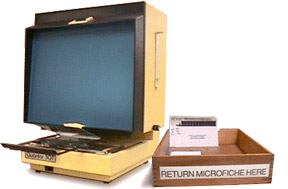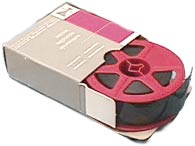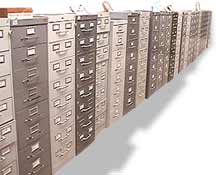« previous Page 7 of 15 next »
Other Forms of Information Storage
Microfilm and microfiche

While most periodicals are bound into paper volumes, some are instead transferred to microfilm or microfiche. Why? Periodicals that come out very frequently take up an enormous amount of space. Many libraries don't have room to keep them in paper format. Newspapers are made of poor quality paper and crumble when they get old.
Microfiche
Microfiche are small cards with negative pictures of the pages of a periodical or book. A reader is used to "blow up" the pictures so you can read them.
Microfilm
Microfilm are made up of reels of negative pictures of the pages of a periodical or book. A reader is used to "blow up" the pictures so you can read them.

TIM'S TOUR: Tim knows it would really make his paper stand out if he includes some newspaper coverage of Vietnam during the war. The reference librarian told him that the library keeps newspapers like the New York Times and the Atlanta Journal and Constitution from that time period on microfilm. Tim goes to the microfilm area and finds the microfilm in the drawer. Success! until he spends ten minutes wrestling with the microfilm reader/printer. Tim gets some help from the person at the Microforms desk. How come the staff make it look so simple?
Everybody knows that microfilm and microfiche aren't as easy to use as a paper or electronic source. Libraries use these formats to preserve paper and as a way to make the best use of space. Look at the cabinets below: they can fit several newspapers, each going back a hundred years or more.

« previous Page 7 of 15 next »
